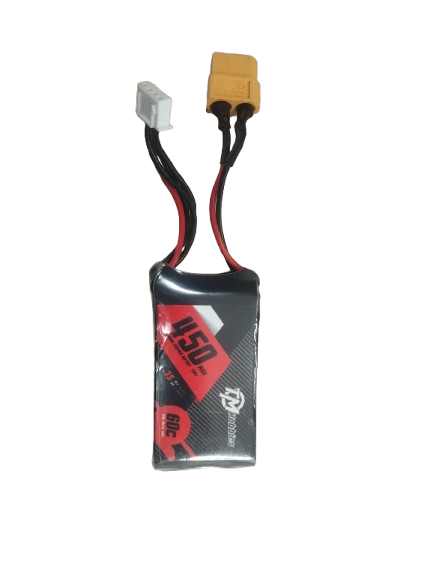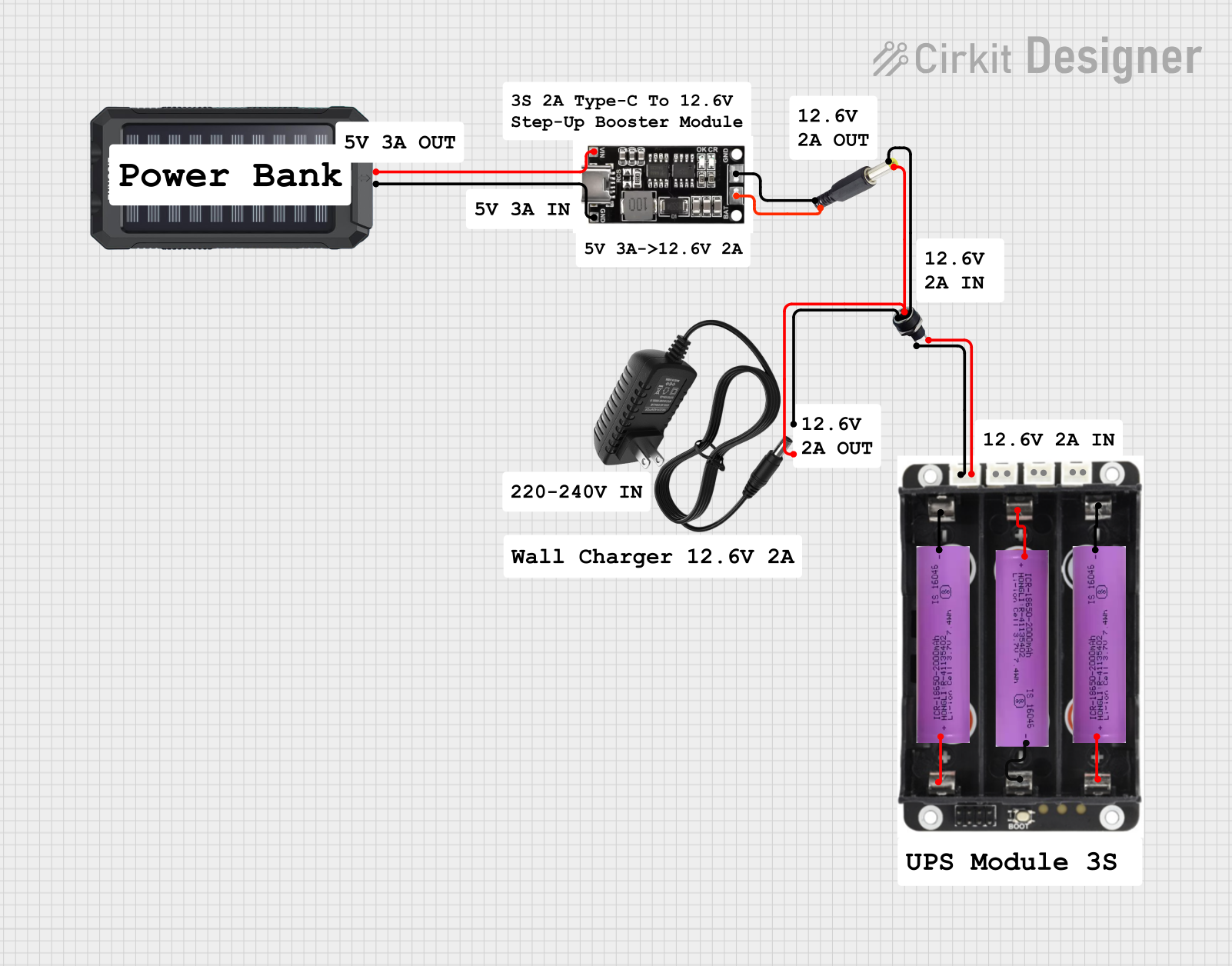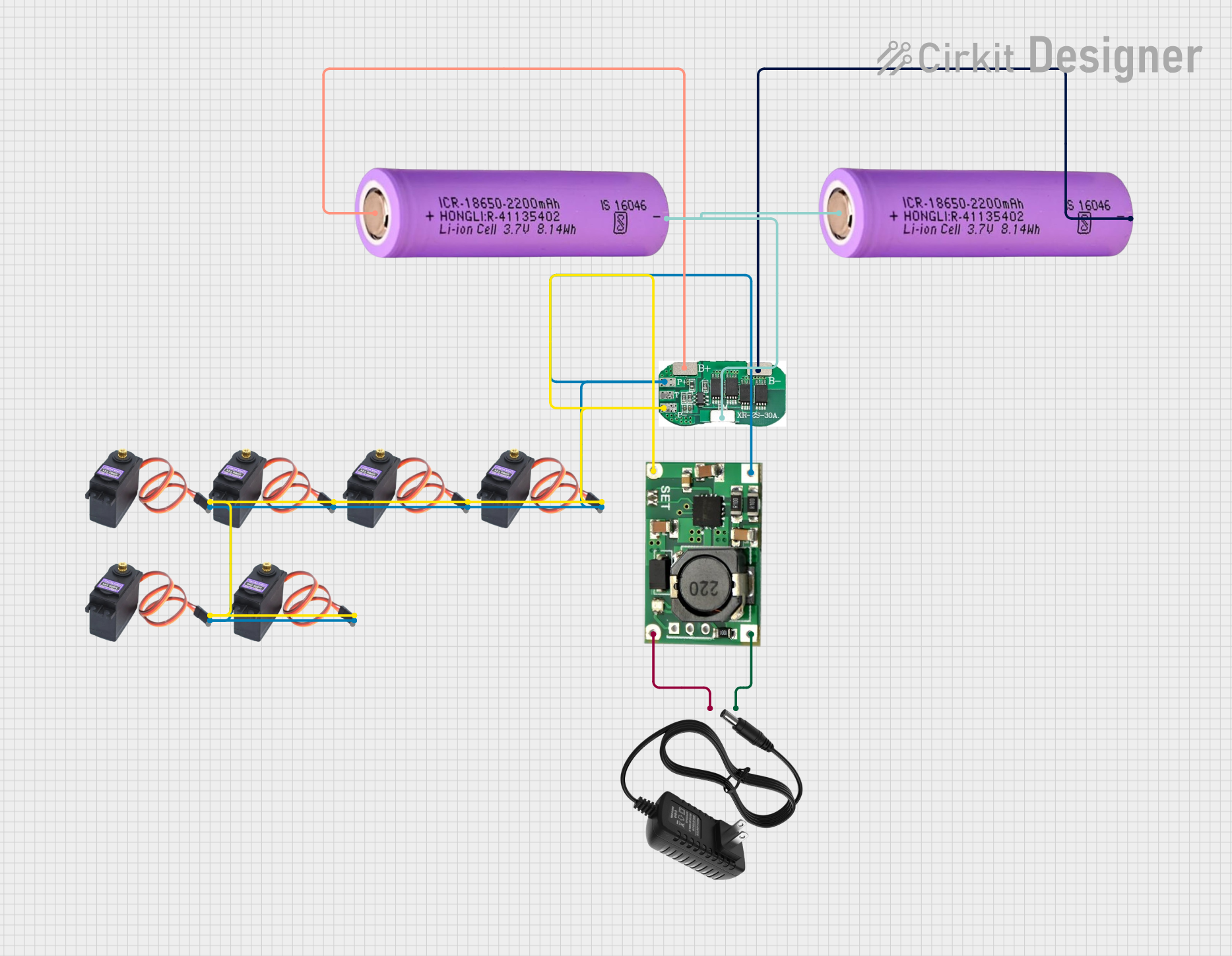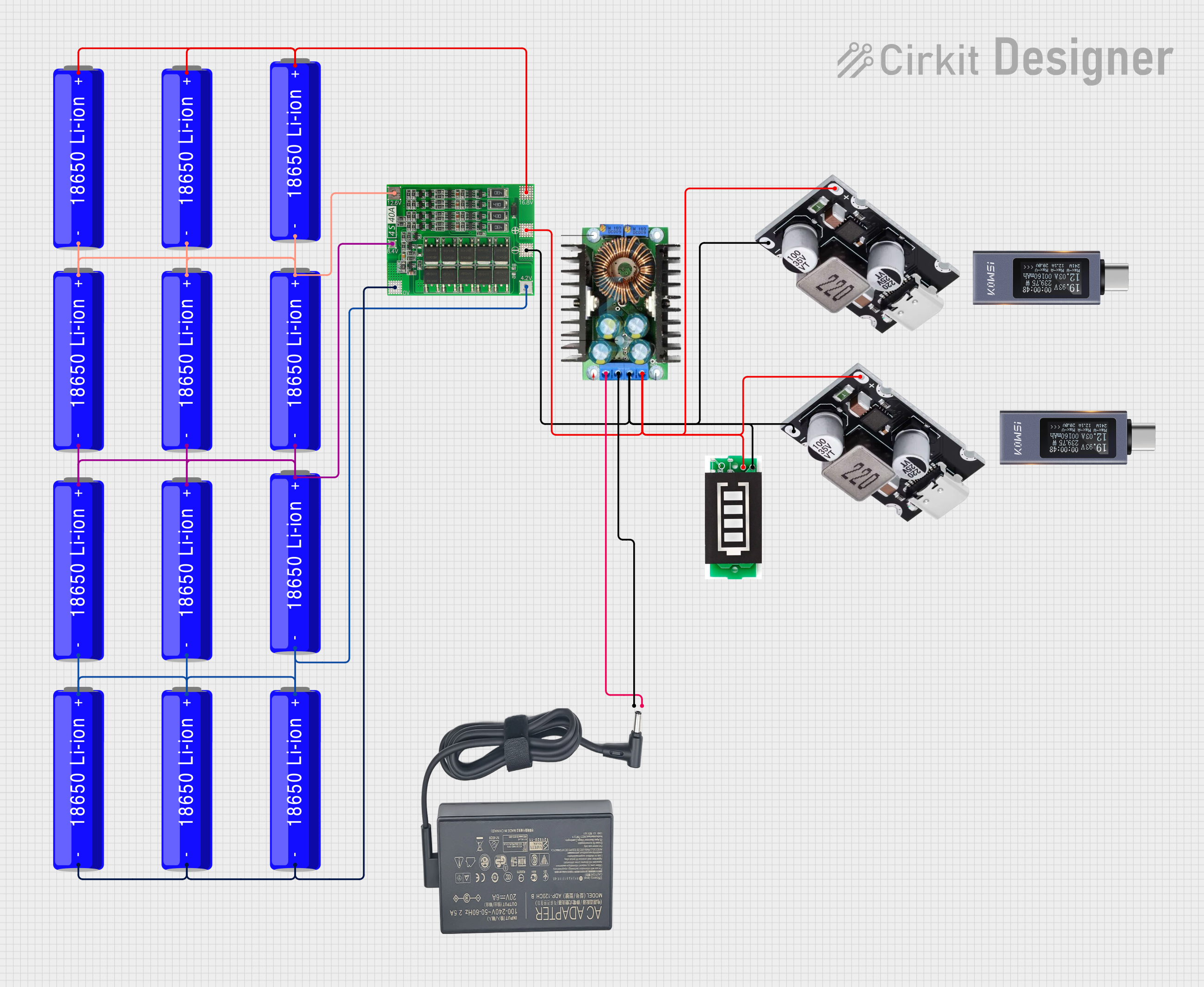
How to Use Battery 11.1V 450mAh: Examples, Pinouts, and Specs

 Design with Battery 11.1V 450mAh in Cirkit Designer
Design with Battery 11.1V 450mAh in Cirkit DesignerIntroduction
The Battery 11.1V 450mAh is a rechargeable lithium polymer (LiPo) battery designed to deliver a nominal voltage of 11.1 volts and a capacity of 450 milliamp hours (mAh). This compact and lightweight power source is ideal for applications requiring a reliable and portable energy supply. Its high energy density and stable discharge characteristics make it suitable for powering drones, RC vehicles, portable electronics, and embedded systems.
Explore Projects Built with Battery 11.1V 450mAh

 Open Project in Cirkit Designer
Open Project in Cirkit Designer
 Open Project in Cirkit Designer
Open Project in Cirkit Designer
 Open Project in Cirkit Designer
Open Project in Cirkit Designer
 Open Project in Cirkit Designer
Open Project in Cirkit DesignerExplore Projects Built with Battery 11.1V 450mAh

 Open Project in Cirkit Designer
Open Project in Cirkit Designer
 Open Project in Cirkit Designer
Open Project in Cirkit Designer
 Open Project in Cirkit Designer
Open Project in Cirkit Designer
 Open Project in Cirkit Designer
Open Project in Cirkit DesignerCommon Applications and Use Cases
- Remote-controlled (RC) vehicles, drones, and aircraft
- Portable electronic devices and wearables
- Robotics and embedded systems
- Backup power for small IoT devices
- Prototyping and DIY electronics projects
Technical Specifications
The following table outlines the key technical details of the Battery 11.1V 450mAh:
| Parameter | Value |
|---|---|
| Nominal Voltage | 11.1V |
| Capacity | 450mAh |
| Chemistry | Lithium Polymer (LiPo) |
| Maximum Discharge Rate | 25C (11.25A) |
| Charging Voltage | 12.6V (max) |
| Charging Current | 0.5A (recommended) |
| Dimensions | 50mm x 30mm x 10mm (approx.) |
| Weight | ~40g |
| Connector Type | JST or XT30 (varies by model) |
Pin Configuration and Descriptions
The battery typically includes two types of connectors: a main power connector and a balance connector. The pin configuration is as follows:
Main Power Connector (e.g., JST or XT30)
| Pin | Description |
|---|---|
| Red | Positive terminal (+) |
| Black | Negative terminal (-) |
Balance Connector (3-pin JST-XH)
| Pin | Description |
|---|---|
| Pin 1 | Cell 1 positive (+) |
| Pin 2 | Cell 2 positive (+) |
| Pin 3 | Cell 3 positive (+) |
Note: The balance connector is used for charging and monitoring individual cell voltages to ensure safe and balanced charging.
Usage Instructions
How to Use the Battery in a Circuit
- Connect the Main Power Connector: Use the red (positive) and black (negative) wires to supply power to your circuit or device.
- Monitor Voltage Levels: Ensure the battery voltage does not drop below 9.0V (3.0V per cell) to prevent over-discharge, which can damage the battery.
- Use a Compatible Charger: Always charge the battery with a LiPo-compatible charger that supports 3S (3-cell) configurations. Set the charging voltage to 12.6V and the current to 0.5A for optimal safety and longevity.
- Balance Charging: Connect the balance connector to the charger to ensure all cells are charged evenly.
Important Considerations and Best Practices
- Avoid Overcharging: Never charge the battery above 12.6V to prevent overheating or damage.
- Prevent Short Circuits: Ensure the terminals do not come into contact with conductive materials.
- Storage: Store the battery at a voltage of approximately 11.4V (3.8V per cell) in a cool, dry place.
- Discharge Rate: Do not exceed the maximum discharge rate of 25C (11.25A) to avoid overheating or damage.
- Safety Precautions: Use a fireproof LiPo battery bag during charging and storage for added safety.
Example: Using the Battery with an Arduino UNO
To power an Arduino UNO with this battery, you can connect the battery's main power connector to a DC barrel jack adapter. Ensure the voltage regulator on the Arduino board can handle the 11.1V input.
// Example code for Arduino UNO powered by Battery 11.1V 450mAh
// This code blinks an LED connected to pin 13
void setup() {
pinMode(13, OUTPUT); // Set pin 13 as an output for the LED
}
void loop() {
digitalWrite(13, HIGH); // Turn the LED on
delay(1000); // Wait for 1 second
digitalWrite(13, LOW); // Turn the LED off
delay(1000); // Wait for 1 second
}
Note: Ensure the Arduino's voltage regulator can handle the input voltage. If needed, use a step-down voltage regulator to supply 5V to the Arduino.
Troubleshooting and FAQs
Common Issues and Solutions
Battery Not Charging
- Cause: Charger not compatible or balance connector not connected.
- Solution: Use a LiPo-compatible charger and ensure the balance connector is properly connected.
Battery Overheating During Use
- Cause: Exceeding the maximum discharge rate.
- Solution: Reduce the load on the battery or use a battery with a higher discharge rating.
Device Shuts Down Unexpectedly
- Cause: Battery voltage dropped below the safe limit (9.0V).
- Solution: Recharge the battery immediately and avoid over-discharging in the future.
Swollen or Damaged Battery
- Cause: Overcharging, over-discharging, or physical damage.
- Solution: Stop using the battery and dispose of it safely according to local regulations.
FAQs
Q: Can I use this battery for a 12V device?
- A: Yes, but ensure the device can operate within the voltage range of 9.0V to 12.6V.
Q: How long will the battery last on a full charge?
- A: The runtime depends on the load. For example, a device drawing 450mA will run for approximately 1 hour.
Q: Can I charge the battery without the balance connector?
- A: It is not recommended. Balance charging ensures all cells are charged evenly, improving safety and battery life.
Q: Is it safe to leave the battery connected to a device when not in use?
- A: No, disconnect the battery to prevent over-discharge or accidental short circuits.
By following these guidelines and best practices, you can safely and effectively use the Battery 11.1V 450mAh in your projects.